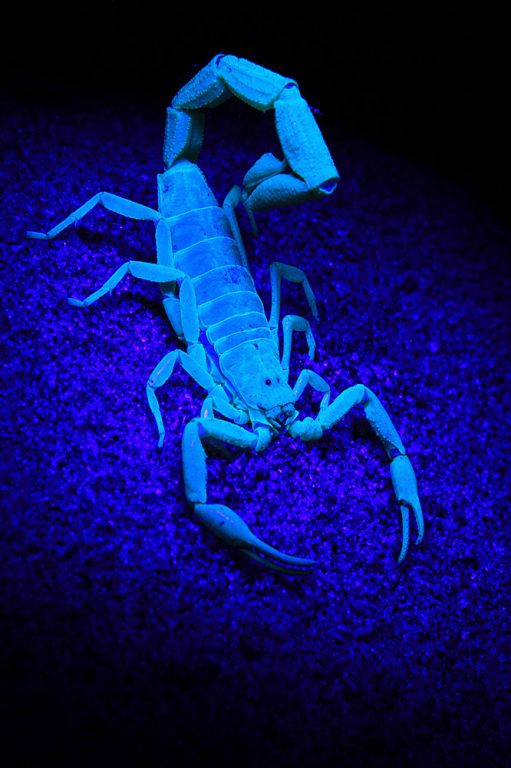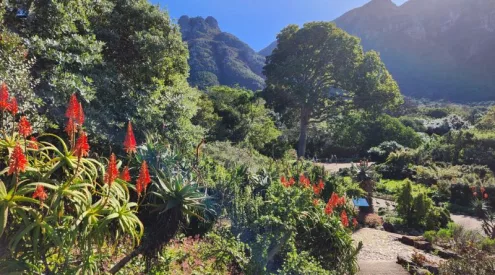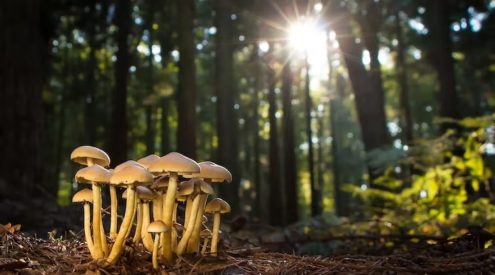Scorpions are incredibly successful predators, able to survive in an array of harsh climates with extreme temperatures. They are masters of making rocks and bark and small crevices and burrows into microhabitats in which they thrive. They can ambush and overpower prey much bigger than them, using their venom to subdue and kill anything that is a threat or a potential meal.

1) Scorpions have been around for an estimated 450 million years. That’s earlier than the dinosaurs!
2) Scorpions are found on every continent except Antarctica, living in habitats ranging from tropical rainforests to deserts and savannah grasslands.
3) Scorpions glow in the dark (or at least under UV light). Scientists are not one hundred percent certain why this is, but they do know it has something to do with their exoskeleton because they appear duller when freshly shed.

Scorpions tend to be nocturnal creatures not often seen during the day. So one night, I went in search of the arachnids. When exposed to ultraviolet, or UV, light at night, their exoskeletons glow a vibrant blue-green against the darkness. Using a tripod and cable release, and painting the scorpion with the UV light I photographed the creature as it glowed in the darkness.
Picture: Johann Visser, Bloemfontein/ Getaway Gallery
4) Scorpions are arachnids (like spiders,) but their eight legs are overlooked because of their pincers and sting bearing tails.
5) Scorpion venom is some of the strongest known venoms in the world, per millilitre. It is thought that scorpions are able to adjust the amount of venom they inject, and that they can target particular species with their neurotoxic venom.
6) Sometimes scorpions will sting their own mates to subdue or calm them during courtship. The male follows a pheromonal trail that the female leaves, and lets her know that he’s not prey by tapping out vibrations on the ground. Then they link pincers the dance begins, as they move around until they locate a suitable spot to mate.
7) Depending on the species, scorpions have a gestation period of 2-18 months (twice as long as humans!) Once hatched, the babies crawl onto the mother’s back where she carries them until their first moult of their exoskeleton.
8) Scorpions can live for up to twenty-five years, although around 6 to ten years is more usual.
9) The size of the pincers and tail depends on the type of scorpion, and is a good indication of how venomous they may be. Scorpions are divided into two families, Scorpionidae which have large pincers and smaller tails and rely on their pincers to catch prey, and Buthidae which have small pincers and large tails. These are the ones to watch out for! They may look small and harmless, but their stings can pack a serious punch. In the case of a Parabuthas, part of the Buthidae family, medical attention should be sought as the sting can be deadly.
10) Scorpions can go up to a year without eating. They are opportunistic eaters rather than hunters, and spend much of their lives being sedentary and waiting for prey to come their way.
ALSO READ,
















